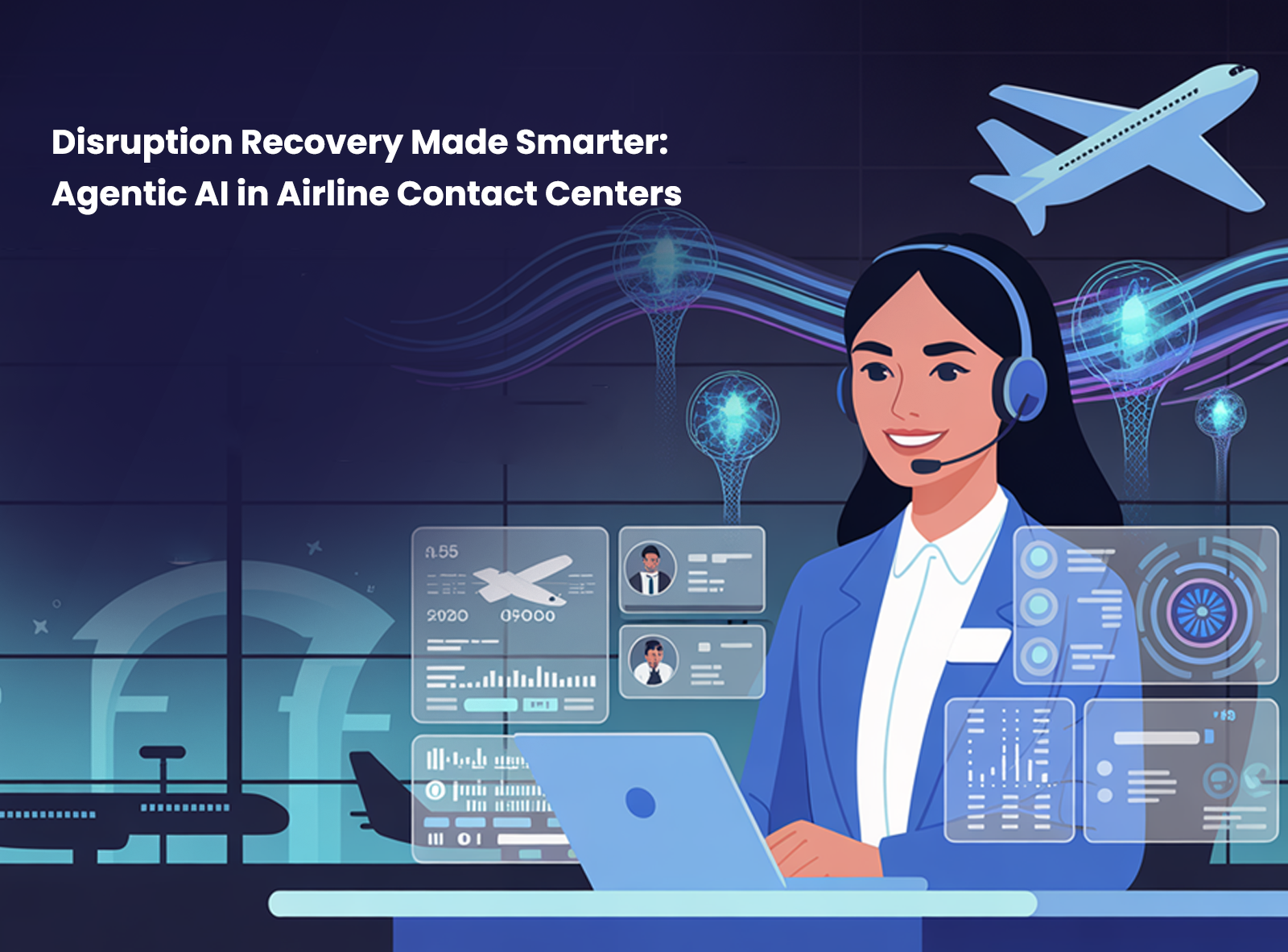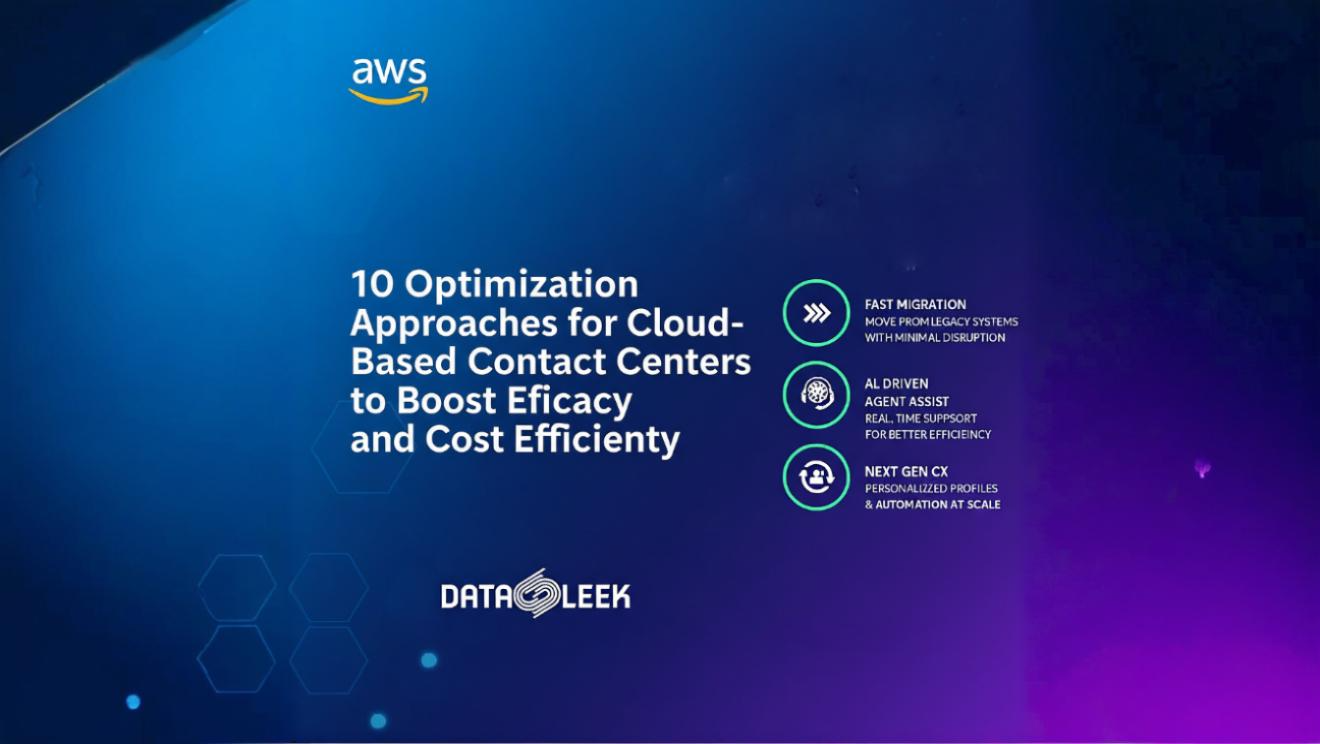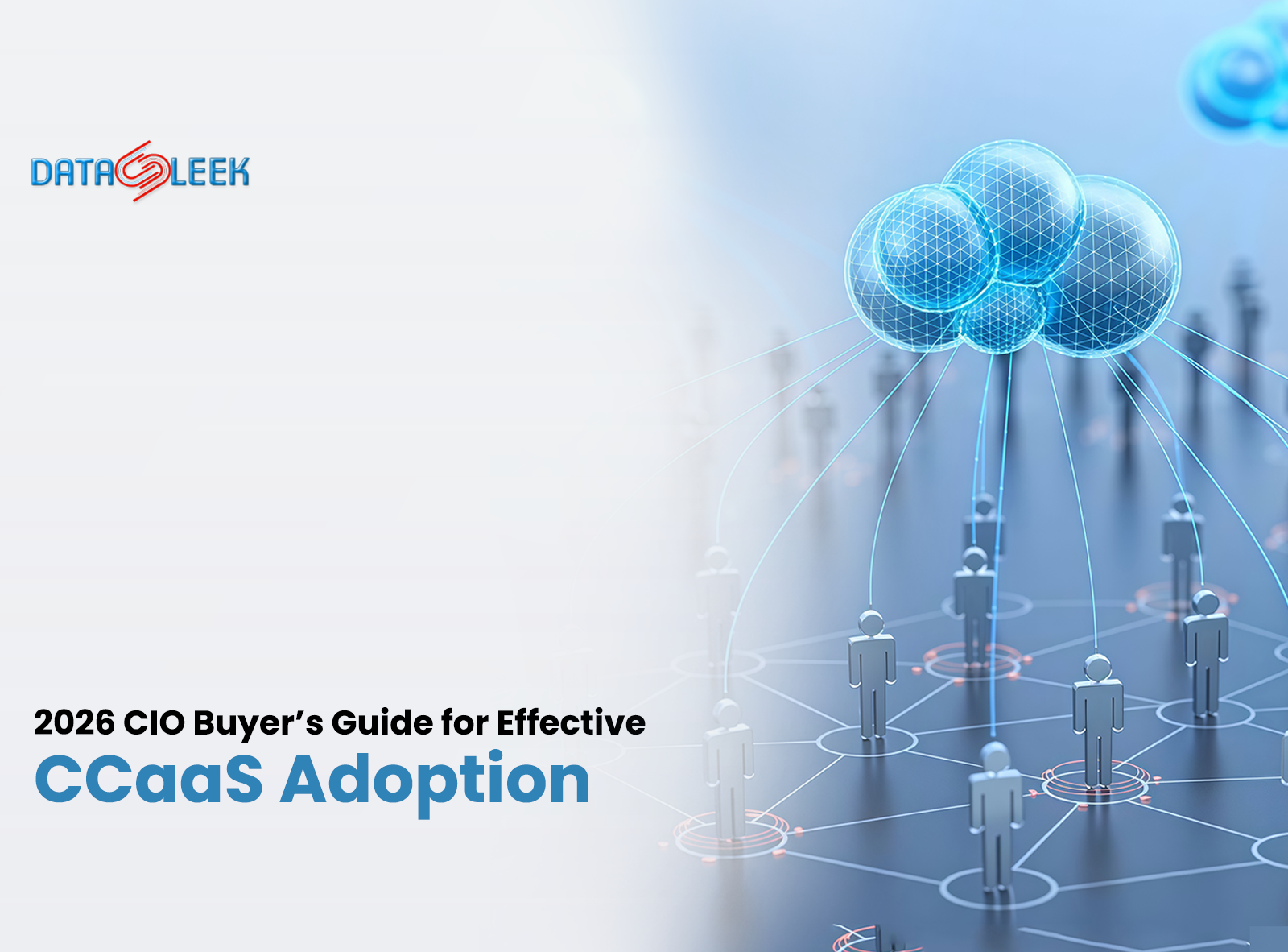Flight disruptions — caused by weather, mechanical failures, crew shortages, or air traffic issues — are a fact of airline life. But traditional contact center responses often struggle to scale when disruption hits: long hold times, overwhelmed agents, inconsistent policies, frustrated passengers, hidden operational costs.
Agentic AI presents a way forward. Rather than merely reacting, AI systems can anticipate, act, and coordinate across channels to make disruption recovery faster, smoother, and more consistent. In this post, we’ll explore what Agentic AI looks like in airline disruption recovery, what metrics matter, the business impact, and how companies like Data Sleek can help bring this to life.

What Is Agentic AI in Airline Disruption Recovery?
Agentic AI for airlines means systems that don’t just provide scripted responses, but can autonomously detect an event, assess its impact, trigger workflows, and guide both agents and passengers through recovery. Key components include:
-
Real-time detection (e.g., weather alerts, airport system outages)
-
Integrated passenger data (booking, loyalty, rebooking history)
-
Policy and rule engines (refunds, rebooking, customer entitlements)
-
Automated routing and notifications to affected passengers
-
Agent assist tools giving staff context, suggested options, and priority workflows

Why Traditional Disruption Recovery Falls Short
| Problem | Effect on CX & Operations |
|---|---|
| High agent workload during peaks | Long wait times, high costs |
| Inconsistent information given across channels | Customer confusion, reputational damage |
| Manual rebooking / compensations | Delays, errors, high agent effort |
| Difficulty in forecasting disruption magnitude | Reactive staffing, over/under resourcing |
| Poor feedback loops / lack of visibility | Slow improvement, recurring issues |
How Agentic AI Improves Disruption Recovery
-
Proactive Notification & Routing
When a disruption is predicted (say a storm forecast or ATC delay), AI can notify affected passengers automatically via SMS/email/app, suggest rebookings, or offer alternatives—even before they call in. -
Automated Passenger Rebooking
AI can use policy plus passenger preferences to generate rebooking suggestions, present them to agents (or directly to passengers), reducing time and mistakes. -
Agent Assist Tools
Agents get contextual cues: flight history, loyalty status, policy entitlements, alternative flights, refund/compensation rules. This cuts Average Handle Time (AHT), increases First Contact Resolution (FCR), and reduces agent error. -
Multi-Channel Consistency
Make sure the information provided via voice, chat, web, app, or SMS is consistent, up to date, and automatically synchronized. -
Analytics & Continuous Feedback
After each disruption, collect data on how many were rebooked successfully, how many hold times increased, how many passengers abandoned calls, CSAT. Use that to refine AI, policies, staffing.

Data & Business Impact: What the Numbers Show
-
Some airline case studies show that during disruption events, AI-powered tools can contain 40–45% of customer queries through automated channels or self-service rather than overloading live agents.
-
Agent Assist tools reduce AHT in airline contact centers by 15-30%, particularly for rebooking or flight delay issues.
-
Better routing of rebooking and refunds, combined with automation, reduces transfer rates and speed up resolution, improving CSAT.
-
Cost savings come from fewer live agent minutes, lower compensation and hotel costs (because rebookings happen faster), and reduced churn from poor CX.

Key Metrics / KPIs to Track in Disruption Recovery
-
Average Wait Time during disruption peaks
-
Containment / Deflection Rate (percentage of queries handled without human handover)
-
Rebooking Speed (how long from disruption alert to confirmed rebooking)
-
Customer Satisfaction (CSAT) / Post-Disruption Feedback
-
First Contact Resolution (FCR) in disrupted scenarios
-
Cost per Disruption: includes cost of live agents, compensations, hotel accommodations, lost revenue, etc.
-
Agent Productivity / Stress Indicators: how often agents escalate, how long after disruption response is delayed

How Data Sleek Enables Smarter Disruption Recovery
-
Partnering with airlines to integrate Agentic AI via Amazon Connect and associated AWS services
-
Building real-time detection + alert pipelines (weather, system failures etc.)
-
Designing automated rebooking workflows with policy engines, passenger preferences & loyalty status integration
-
Agent assist dashboards to support agents during high-stress disruption events
-
Analytics dashboards to measure the KPIs above and feed into continuous improvement

Challenges & Best Practices
-
Ensuring data reliability & timeliness (you need up-to-date flight / operational data)
-
Balancing automation with human touch (some disruptions warrant personal attention)
-
Transparent policies and entitlements to avoid confusion or legal risk
-
Regulatory / data privacy compliance in notifications, personal data sharing
-
Resilient infrastructure and fallback when AI systems go down

Conclusion
Disruptions will happen. The question is whether you respond poorly — or deliver a recovery experience that builds loyalty.
Agentic AI gives airlines the tools to handle disruption proactively, reduce wait times, lower costs, and restore trust. With Data Sleek, this isn’t just possible — it’s practical.




